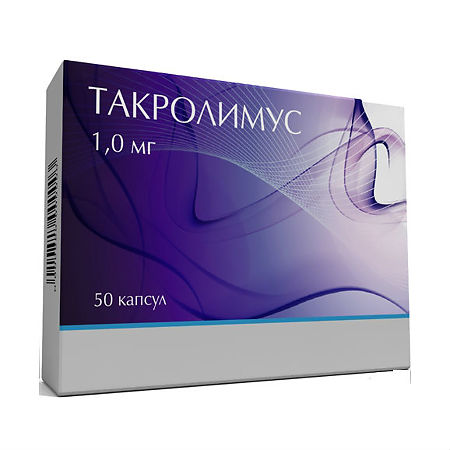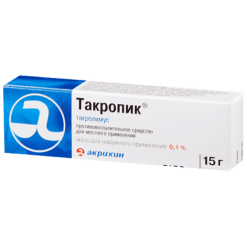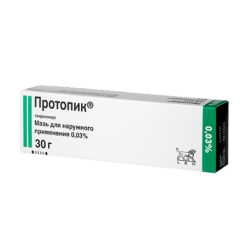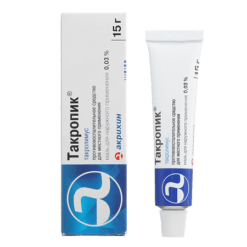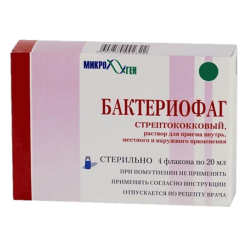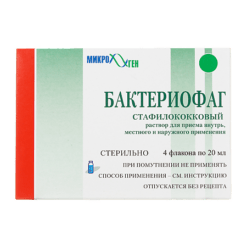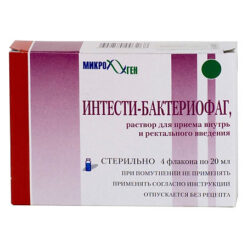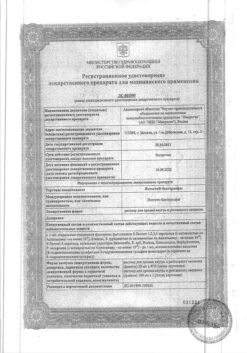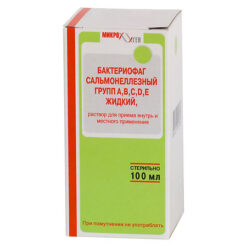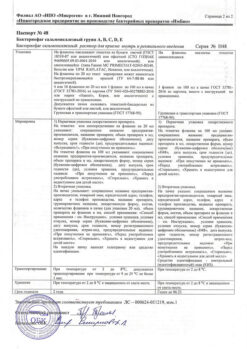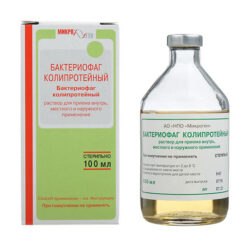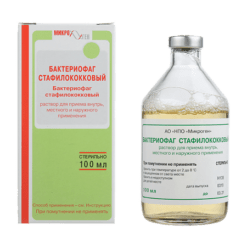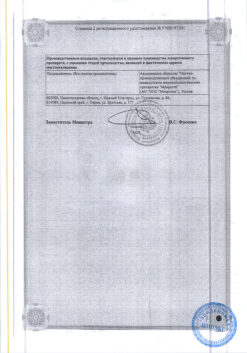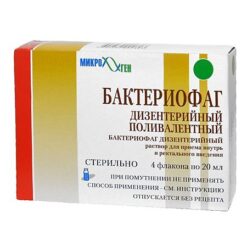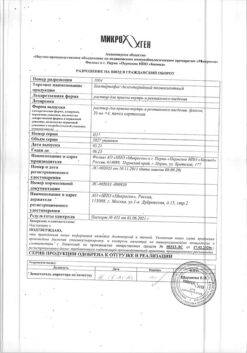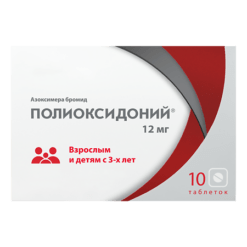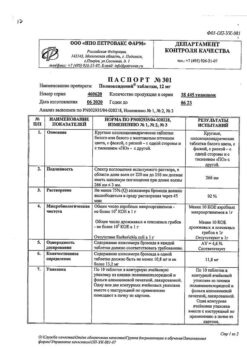No products in the cart.
Tacrolimus, 1 mg capsules 50 pcs
€1.00
Out of stock
(E-mail when Stock is available)
Description
Prevention of liver, kidney, or heart allograft rejection.
Treatment of allograft rejection resistant to other immunosuppressive regimens.
Indications
Indications
Prevention of liver, kidney or heart allograft rejection.
Treatment of allograft rejection resistant to other immunosuppressive therapy regimens.
Pharmacological effect
Pharmacological effect
Prevention of liver, kidney or heart allograft rejection.
Treatment of allograft rejection resistant to other immunosuppressive therapy regimens.
Special instructions
Special instructions
In the initial post-transplantation period, regular monitoring of the following parameters should be carried out: blood pressure, ECG, neurological and visual status, fasting blood glucose levels, electrolyte concentrations (especially potassium), indicators of hepatic and renal function, hematological indicators, coagulogram, proteinemia level. If there are clinically significant changes, adjustment of immunosuppressive therapy is necessary.
Errors in the use of tacrolimus have been observed in practice, including unjustified, unintentional or uncontrolled transfer of patients from one dosage form of tacrolimus (standard or extended-release) to another. This resulted in serious adverse events, including graft failure or other side effects, which may have been due to hypo- or hyperimmunosuppression resulting from clinically significant differences in systemic tacrolimus exposure. The patient should be managed on one of the dosage forms of tacrolimus with the appropriate dosage regimen; changes in the dosage form or dosage regimen should only be carried out under the supervision of a specialist in the field of transplantation.
With simultaneous use of tacrolimus and strong inhibitors of the CYP3A4 isoenzyme (for example, telaprevir, boceprevir, ritonavir, ketoconazole, voriconazole, itraconazole, telithromycin or clarithromycin) or inducers of the CYP3A4 isoenzyme (for example, rifampicin, rifabutin), it is necessary to monitor the concentration of tacrolimus in the blood in order to timely adjust the dose.
When using tacrolimus, you should avoid prescribing herbal remedies containing St. John’s wort (Hypericum perforatum), as well as other herbal remedies that may cause a decrease (change) in the concentration of tacrolimus in the blood and have an adverse effect on the therapeutic effect of the drug.
During diarrhea, the concentration of tacrolimus in the blood may vary significantly; If diarrhea occurs, careful monitoring of tacrolimus blood concentrations is necessary.
Concomitant use of cyclosporine and tacrolimus should be avoided, and caution should be exercised when treating patients with tacrolimus who have previously received cyclosporine.
Cases of ventricular hypertrophy or septal hypertrophy, reported as cardiomyopathy, are rare but have been observed in patients receiving tacrolimus. In most cases, myocardial hypertrophy was reversible and was observed at concentrations of (Co)tacrolimus in the blood that significantly exceeded the maximum recommended. Other factors that increase the risk of this adverse event include: the presence of pre-existing heart disease, the use of glucocorticosteroids, arterial hypertension, impaired liver and kidney function, infections, hypervolemia, edema. Patients at high risk and receiving intensive immunosuppressive therapy, especially children, should undergo echocardiographic and ECG monitoring before and after transplantation (after 3 and 9-12 months). If abnormalities are detected, consideration should be given to reducing the dose of tacrolimus or changing to another immunosuppressive agent.
Tacrolimus may cause QT prolongation and torsade de pointes (TdP). Caution should be exercised when treating patients with suspected or diagnosed congenital or acquired long QT syndrome, as well as patients receiving drugs that prolong the QT interval, cause electrolyte disturbances, or increase tacrolimus blood concentrations. Consideration should also be given to patients with risk factors for QT prolongation, including patients with a personal or family history of QT prolongation episodes, congestive heart failure, bradyarrhythmias, and electrolyte abnormalities.
Gastrointestinal perforation has been reported in patients taking tacrolimus. Because gastrointestinal perforation is a medically significant event that can lead to a serious or life-threatening condition, treatment should be initiated immediately after signs or symptoms of a perforation occur.
Patients taking tacrolimus may develop post-transplant lymphoproliferative diseases (PTLD) associated with the Epstein-Barr virus. When tacrolimus is used concomitantly with antilymphocyte antibodies (for example, daclizumab, basiliximab), the risk of PTLD increases. Children under 2 years of age, as well as children with a negative Epstein-Barr virus capsid antigen test, are at high risk of developing PTLD. Therefore, before prescribing Tacrolimus in this group of patients, a serological test for the presence of Epstein-Barr virus capsid antigen should be performed. During treatment, careful monitoring for Epstein-Barr virus using polymerase chain reaction (PCR) is recommended. A positive Epstein-Barr virus PCR may persist for months and is not in itself evidence of PTLD or lymphoma.
There are reports of the occurrence of reversible posterior encephalopathy syndrome during tacrolimus therapy. If a patient taking tacrolimus develops symptoms characteristic of reversible posterior encephalopathy syndrome: headache, mental disturbances, seizures and visual disturbances, a radiological test, such as magnetic resonance imaging, should be performed. Once the diagnosis is confirmed, blood pressure and seizures should be adequately controlled, and systemic tacrolimus should be discontinued immediately. If these measures are taken, this condition is completely reversible in most patients.
Patients receiving immunosuppressive therapy, including tacrolimus, are at increased risk of opportunistic infections (caused by bacteria, fungi, viruses, protozoa). Among these infections, nephropathy associated with
BK virus, as well as JC virus-associated progressive multifocal leukoencephalopathy (PML). Such infections are often associated with profound suppression of the immune system and can lead to severe or fatal outcomes, which must be taken into account in the differential diagnosis of patients who have evidence of impaired renal function or neurological symptoms during immunosuppressive therapy.
Cases of partial red cell aplasia of the bone marrow (PRCA) have been reported in patients taking tacrolimus. All patients had risk factors for PRCA, such as the presence of parvovirus B19 infection, diseases, or concomitant therapy associated with the possibility of developing PRCA.
Immunosuppressive therapy increases the risk of malignant neoplasms, in particular skin malignancies. It is recommended to limit sun exposure and ultraviolet radiation, wear appropriate clothing, and use sunscreens with a high protection factor. The risk of developing secondary cancer is unknown.
Tacrolimus capsules contain lactose, so special care should be taken when prescribing the drug to patients with rare hereditary diseases associated with lactose intolerance, lactase deficiency or glucose-galactose malabsorption.
Impact on the ability to drive vehicles and machinery
When driving vehicles and working with potentially dangerous mechanisms, you should be careful. Tacrolimus may cause visual and neurological disturbances, especially when combined with alcohol.
Active ingredient
Active ingredient
Tacrolimus
Composition
Composition
1 capsule 1 mg contains:
Active ingredient:
Tacrolimus monohydrate – 1.02 mg, in terms of tacrolimus – 1.00 mg.
Excipients:
Lactose – 133.84 mg;
Tartaric acid – 0.14 mg;
Hyprolose – 0.10 mg;
Croscarmellose sodium – 2.80 mg;
Colloidal silicon dioxide – 0.70 mg;
Magnesium stearate – 1.40 mg.
Composition of the capsule body:
Titanium dioxide – 2%;
Gelatin – up to 100%.
Composition of the capsule cap:
Titanium dioxide – 2%;
Gelatin – up to 100%.
Contraindications
Contraindications
For systemic and external use:
Pregnancy;
Lactation period (breastfeeding);
Hypersensitivity to tacrolimus.
For external use:
Genetic defects of the epidermal barrier, such as Netherton’s syndrome;
Lamellar ichthyosis;
Skin manifestations of graft-versus-host disease;
Generalized erythroderma (due to the risk of a progressive increase in systemic absorption of tacrolimus);
Children and adolescents up to 16 years of age (depending on the dosage form used).
Side Effects
Side Effects
Due to the characteristics of the underlying disease and the large number of drugs used simultaneously after transplantation, the profile of adverse events of immunosuppressants is difficult to accurately determine.
Many of the adverse reactions presented below are reversible and/or decrease with dose reduction. Oral administration is associated with a lower risk of adverse reactions compared to intravenous tacrolimus. Within each frequency group, adverse events are presented in order of decreasing severity. Adverse events classified by organs and systems are listed below in descending order of frequency of detection: very common (> 1/10), common (from > 1/100 to 1/1000 to 1/10,000 to < 1/1,000), very rare (< 1/10,000), frequency unknown (there is insufficient data to establish the frequency of which).
Cardiac disorders: often: ischemic coronary disorders, tachycardia; infrequently: ventricular arrhythmias and cardiac arrest, heart failure, cardiomyopathies, ventricular hypertrophy, supraventricular arrhythmias, palpitations, pathological ECG indicators, rhythm and frequency disturbances and pulse; rarely: pericardial effusion; very rarely: pathological changes on the echocardiogram, prolongation of the QT interval on the electrocardiogram, cardiac arrhythmia such as “pirouette” (bidirectional fusiform ventricular tachycardia).
Vascular disorders: very common: arterial hypertension; common: bleeding, thromboembolic and ischemic complications, peripheral circulatory disorders, vascular hypotension; uncommon: heart attack, deep vein thrombosis of the extremities, shock.
Disorders of the blood and lymphatic system: often: anemia, leukopenia, thrombocytopenia, leukocytosis, decrease or increase in hemoglobin and/or hematocrit, abnormalities in the analysis of red blood cells; uncommon: coagulopathy, deviations in coagulogram parameters, pancytopenia, neutropenia; rarely: thrombotic thrombocytopenic purpura, hypothrombinemia; frequency unknown: partial red cell aplasia, agranulocytosis, hemolytic anemia.
Nervous system disorders: very common: tremor, headache; often: convulsions, disturbances of consciousness, paresthesia and dysesthesia, peripheral neuropathies, dizziness, writing disorders, nervous system disorders; uncommon: coma, hemorrhages in the central nervous system and cerebrovascular accidents, paralysis and paresis, encephalopathy, speech and articulation disorders, amnesia; rarely: increased muscle tone; very rarely: myasthenia gravis.
Visual disorders: often: blurred vision, photophobia, eye diseases, visual impairment; uncommon: cataract; rare: blindness.
Hearing disorders and labyrinthine disorders: often: noise (ringing) in the ears; uncommon: hearing loss; rarely: sensorineural deafness; very rare: hearing impairment.
Disorders of the respiratory system, chest and mediastinal organs: often: shortness of breath, pulmonary parenchymal disorders, pleural effusion, pharyngitis, cough, nasal congestion, rhinitis; uncommon: respiratory failure, respiratory tract disorders, asthma; rare: acute respiratory distress syndrome.
Gastrointestinal disorders: very common: diarrhea, nausea; often: inflammatory diseases of the gastrointestinal tract, gastrointestinal ulcers and perforations, gastrointestinal bleeding, stomatitis and ulceration of the oral mucosa, ascites, vomiting, gastrointestinal and abdominal pain, dyspepsia, constipation, flatulence, feelings of bloating and fullness in the abdomen, loose stools, symptoms of gastrointestinal disorders tract; uncommon: paralytic intestinal obstruction (paralytic ileus), peritonitis, acute and chronic pancreatitis, increased blood amylase levels, gastroesophageal reflux disease, impaired gastric evacuation function; rarely: subileus, pancreatic pseudocysts.
Renal and urinary tract disorders: very common: impaired renal function; often: renal failure, acute renal failure, oliguria, acute tubular necrosis, toxic nephropathy, urinary syndrome, bladder and urethral disorders; uncommon: anuria, hemolytic uremic syndrome; very rare: nephropathy, hemorrhagic cystitis.
Disorders of the skin and subcutaneous tissues: often: itching, rash, alopecia, acne, hyperhidrosis; uncommon: dermatitis, photosensitivity; rarely: toxic epidermal necrolysis (Lyell’s syndrome); very rare: Stevens-Johnson syndrome.
Musculoskeletal and connective tissue disorders: common: arthralgia, muscle cramps, limb pain, back pain; uncommon: joint disorders.
Endocrine system disorders:
rarely: hirsutism.
Metabolic and nutritional disorders:
very often: hyperglycemia, diabetes mellitus, hyperkalemia; often: hypomagnesemia, hypophosphatemia, hypokalemia, hypocalcemia, hyponatremia, hypervolemia, hyperuricemia, decreased appetite, anorexia, metabolic acidosis, hyperlipidemia, hypercholesterolemia, hypertriglyceridemia, electrolyte disturbances; uncommon: dehydration, hypoproteinemia, hyperphosphatemia, hypoglycemia.
Immune system disorders: Allergic and anaphylactic reactions have been observed in patients taking tacrolimus.
Infectious and parasitic diseases: during therapy with tacrolimus, like other immunosuppressants, the risk of local and generalized infectious diseases (viral, bacterial, fungal, protozoal) increases. The course of previously diagnosed infectious diseases may worsen. Cases of BK virus-associated nephropathy, as well as JC virus-associated progressive multifocal leukoencephalopathy (PML), have been observed during immunosuppressive therapy, including tacrolimus therapy.
Injuries, intoxications and complications of manipulation:
often: primary graft dysfunction.
Errors in the use of tacrolimus drugs have been observed in practice, including unjustified, unintentional or uncontrolled transfer of patients from one dosage form of tacrolimus (standard or extended-release) to another, and associated cases of transplant rejection have been reported (frequency cannot be estimated from the available data).
Benign, malignant and unspecified neoplasms (including cysts and polyps): Patients receiving immunosuppressive therapy have a higher risk of developing malignancies. The occurrence of both benign and malignant neoplasms, including Epstein-Barr virus (EBV)-associated lymphoproliferative diseases and skin cancer, has been observed with the use of tacrolimus.
General disorders and disorders at the injection site:
often: asthenia, fever, swelling, pain and discomfort, increased activity of alkaline phosphatase in the blood, weight gain, disturbances in the perception of body temperature; uncommon: multiple organ failure, flu-like syndrome, disturbances in the perception of ambient temperature, a feeling of tightness in the chest, anxiety, deterioration in health, increased activity of lactate dehydrogenase in the blood, loss of body weight; rarely: thirst, loss of balance (falling), chest tightness, difficulty moving, ulcer; very rarely: increase in adipose tissue mass.
Disorders of the liver and biliary tract:
often: increased levels of liver enzymes, liver dysfunction, pathological changes in liver function tests, cholestasis and jaundice, liver cell damage and hepatitis, cholangitis; rarely: thrombosis of the hepatic artery, obliterating endophlebitis of the hepatic veins; very rare: liver failure, bile duct stenosis.
Disorders of the genital organs and breast:
uncommon: dysmenorrhea and uterine bleeding.
Mental disorders:
very often: insomnia; often: anxiety, confusion and disorientation, depression, depressed mood, affective disorders, nightmares, hallucinations, mental disorders; uncommon: psychotic disorders.
Interaction
Interaction
Metabolic interactions
Tacrolimus, located in the systemic circulation, is metabolized in the liver by the CYP3A4 isoenzyme of the cytochrome P450 system. When taken orally, tacrolimus is also metabolized by the CYP3A4 isoenzyme of the cytochrome P450 system located in the intestinal wall. Concomitant use of drugs or herbs with known inhibitory or inducing effects on the CYP3A4 isoenzyme may respectively increase or decrease tacrolimus blood concentrations. To maintain an adequate and constant concentration of tacrolimus when used simultaneously with drugs that can change the activity of the CYP3A4 isoenzyme or have other effects on the pharmacokinetics of tacrolimus, it is recommended to monitor the concentration of tacrolimus in the blood and, if necessary, adjust the dose or discontinue the drug. The QT interval (using electrocardiography), renal function and possible side effects should also be monitored.
Metabolism inhibitors
Based on clinical experience, it has been established that the following drugs can significantly increase the concentration of tacrolimus in the blood: antifungals (ketoconazole, fluconazole, itraconazole, voriconazole), macrolide antibiotics (erythromycin), HIV protease inhibitors (ritonavir, nelfinavir, saquinavir) or hepatitis C virus protease inhibitors (for example, telaprevir, boceprevir). When these drugs are used concomitantly with tacrolimus, a dose reduction of tacrolimus may be necessary in almost all patients. Less pronounced drug interactions were observed with simultaneous use of tacrolimus drugs with clotrimazole, clarithromycin, josamycin, nifedipine, nicardipine, diltiazem, verapamil, amiodarone, danazol, ethinyl estradiol, omeprazole and nefazodone.
In vitro studies have shown that the following substances are potential inhibitors of tacrolimus metabolism: bromocriptine, cortisone, dapsone, ergotamine, gestodene, lidocaine, mephenytoin, miconazole, midazolam, nilvadipine, norethisterone, quinidine, tamoxifen, (triacetyl)oleandomycin.
It is recommended to avoid drinking grapefruit juice due to the possibility of increasing the concentration of tacrolimus in the blood. Lansoprazole and cyclosporine may potentially inhibit the CYP3A4-mediated metabolism of tacrolimus and increase its concentration in the blood.
Metabolism inducers
Based on clinical experience, it was found that the concentration of tacrolimus in the blood can be significantly reduced by the following drugs: rifampicin, phenytoin, St. John’s wort (Hypericum perforatum). If used concomitantly, tacrolimus doses may need to be increased in almost all patients. Clinically significant interactions have been observed with phenobarbital. Glucocorticosteroids in maintenance doses usually reduce the concentration of tacrolimus in the blood. High doses of prednisolone or methylprednisolone used to treat acute rejection may increase or decrease tacrolimus blood concentrations.
Carbamazepine, metamizole and isoniazid may reduce the concentration of tacrolimus in the blood.
Effect of tacrolimus on the metabolism of other drugs
Tacrolimus inhibits the CYP3A4 isoenzyme and, when administered concomitantly, may have an effect on drugs metabolized by the CYP3A4 system. The half-life of cyclosporine increases when used concomitantly with tacrolimus. Synergistic/additive nephrotoxic effects may also be observed. For these reasons, concomitant use of cyclosporine and tacrolimus is not recommended, and caution should be exercised when prescribing tacrolimus to patients who have previously taken cyclosporine.
Tacrolimus increases the concentration of phenytoin in the blood.
Because tacrolimus may decrease the clearance of hormonal contraceptives, it is important to exercise caution when selecting contraceptives.
Data on the interaction of tacrolimus with statins are limited. Clinical observations suggest that the pharmacokinetics of statins does not change when taken concomitantly with tacrolimus.
Experimental studies in animals have shown that tacrolimus has the potential to reduce the clearance and increase the half-life of pentobarbital and phenazone.
Other potential interactions that increase the systemic exposure of tacrolimus
Prokinetic agents (metoclopramide, cisapride). Cimetidine. Magnesium and aluminum hydroxide.
Other potentially adverse drug interactions
Concomitant use of tacrolimus with drugs that have nephro- or neurotoxicity (for example, aminoglycosides, gyrase inhibitors, vancomycin, cotrimoxazole, non-steroidal anti-inflammatory drugs, ganciclovir, acyclovir) may enhance these effects.
Increased nephrotoxicity was observed as a result of concomitant use of tacrolimus with amphotericin B and ibuprofen.
Since tacrolimus may promote or worsen hyperkalemia, high doses of potassium or potassium-sparing diuretics (amiloride, triamterene, spironolactone) should be avoided.
Immunosuppressants may alter the body’s response to vaccination: vaccination may be less effective during treatment with tacrolimus. The use of live attenuated vaccines should be avoided.
Protein binding
Tacrolimus actively binds to plasma proteins. The possible competitive interaction of tacrolimus with drugs that have a high affinity for plasma proteins (non-steroidal anti-inflammatory drugs, oral anticoagulants, oral hypoglycemic agents) should be taken into account.
Incompatibility
Tacrolimus is not compatible with polyvinyl chloride (PVC). Test tubes, syringes and other equipment used in preparing suspensions from Tacrolimus capsules must not contain PVC.
Overdose
Overdose
Information on overdose is limited. Several episodes of accidental overdose have been reported in patients taking tacrolimus medications. Symptoms included tremor, headache, nausea, vomiting, infection, urticaria, lethargy, and elevated blood urea nitrogen, serum creatinine, and alanine aminotransferase.
There are currently no antidotes for tacrolimus. In case of overdose, it is necessary to take standard measures and carry out symptomatic treatment. Given the high molecular weight of tacrolimus, poor solubility in water and pronounced binding to red blood cells and plasma proteins, dialysis is ineffective. In selected patients with very high tacrolimus blood concentrations, hemofiltration or diafiltration has been effective. In cases of oral overdose, gastric lavage and/or the use of adsorbents (for example, activated carbon) may be effective if these measures are taken soon after taking the drug.
Storage conditions
Storage conditions
Store in a place protected from light at a temperature not exceeding 25 °C.
Keep out of the reach of children.
Shelf life
Shelf life
2 years.
Do not use the drug after the expiration date.
Manufacturer
Manufacturer
Nanopharma Development, Russia
Additional information
| Shelf life | 2 years. Do not use after the expiration date. |
|---|---|
| Conditions of storage | Store in the dark place at a temperature not exceeding 25 °С. Store out of the reach of children. |
| Manufacturer | Izvarino Pharma, Russia |
| Medication form | capsules |
| Brand | Izvarino Pharma |
Other forms…
Related products
Buy Tacrolimus, 1 mg capsules 50 pcs with delivery to USA, UK, Europe and over 120 other countries.

